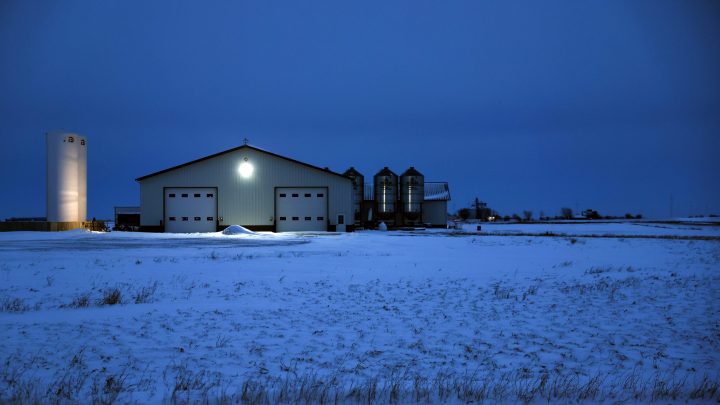
The trend of small farmers selling to big ag companies continues
The trend of small farmers selling to big ag companies continues

American farms are getting bigger. The U.S. Department of Agriculture’s latest Census report found that in 2022, the average farm was 463 acres. That’s up from 441 in 2017 when the last census was taken. Meanwhile, the total number of farms decreased by more than 7% in that time, down to 1.9 million.
This reflects a decades-long trend of consolidation in American agriculture. Small and mid-sized farms are struggling to compete. And if they do go under, larger agriculture operations are often at the ready to buy them up.
The businesses that control our food supply have been consolidating for decades. That includes farmers themselves, said Phil Howard, who studies food systems at Michigan State.
“Policies have just tended to reinforce the idea that it’s better to get big or get out,” he said.
Howard says federal crop insurance, subsidies and lending practices favor large operations and incentivize farmers to produce more and more to maintain the same income.
“It’s described as a treadmill and the small- or medium-sized farmers are more likely to fall off,” he said.
And if they do fall off, sell their land to bigger operations.
Which tend to grow just one or two commodity crops, said Ben Lilliston, director of rural strategies and climate change at the Institute for Agriculture and Trade Policy.
“We’re getting less and less diversity in our food production,” he said.
That’s part of how the U.S. ended up importing more food than we export three out of the last five years, Lilliston said.
And consolidation has consequences for rural economies when, say, eight agriculture employers become one.
“That means fewer people in that community, fewer kids going to school, fewer small businesses in town that are servicing those farmers,” he said.
This trend also makes agriculture a more exclusive club.
According to the census, 95% of American farmers are white, and on average are just over 58 years old.
“But now the barriers are so high,” said Dania Francis, an economist at University of Massachusetts, Boston.
She said generations of discriminatory lending practices have already separated Black farmers from millions of acres of land.
“Larger farms, more capital needed. Just like it’s harder to buy into that great neighborhood for a house, it’s much harder to buy into farm ownership today,” Francis said.
Especially if you don’t own farmland to begin with.
There’s a lot happening in the world. Through it all, Marketplace is here for you.
You rely on Marketplace to break down the world’s events and tell you how it affects you in a fact-based, approachable way. We rely on your financial support to keep making that possible.
Your donation today powers the independent journalism that you rely on. For just $5/month, you can help sustain Marketplace so we can keep reporting on the things that matter to you.

















